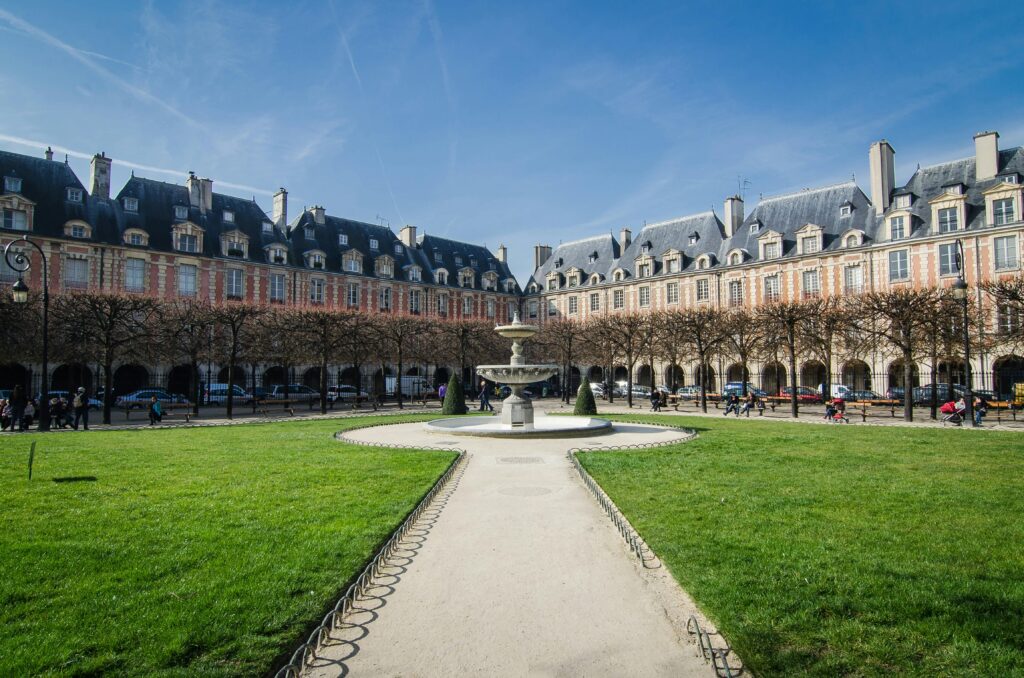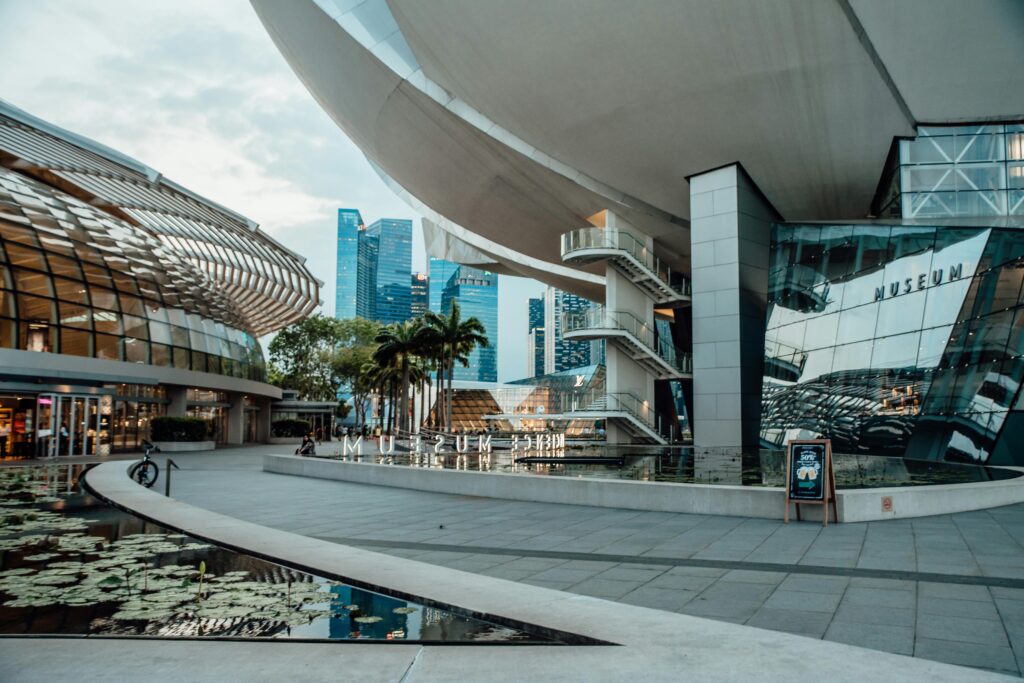Our Blog
What Is a Public Space? The Role and Examples of Public Spaces Supporting Urban Vitality and Community
A “public space” refers to places in urban planning and community life where citizens can freely gather, interact, and engage in various activities.
Public spaces are characterized by being easily accessible to everyone, versatile in use, comfortable, and conducive to social gathering. These qualities make public spaces the foundation for livable cities, enhancing local vitality and strengthening human connections. This article explores what public spaces are, their roles, and their significance in creating better urban environments.
Table of Contents
- 1. What Is a Public Space?
- 1.1 Definition of Public Space
- 1.2 Importance of Public Space
- 2. Learning from Real Examples
- 3. Value and Management of Public Space
1. What Is a Public Space?

1.1 Definition of Public Space
Public spaces include outdoor areas freely accessible to citizens, such as parks, squares, streets, promenades, and waterfronts, as well as public facilities like libraries, museums, civic centers, and community centers. Moreover, privately owned spaces that are open to the public—like courtyards or plazas within commercial facilities—may also be considered public spaces. For example, a square in front of a library can host reading clubs or local events, while parks near sports arenas serve as places for social interaction after games.
To function effectively as a public space, it is important to consider accessibility, multipurpose design, safety, comfort, aesthetics, and preservation of historical and cultural value. Examples include:
- Designing pathways to ensure pedestrian and cyclist safety
- Adopting universal design for accessibility to all ages and abilities
- Enhancing comfort through greenery and waterfront features
- Designing spaces in harmony with local landscape, history, and culture
By considering these factors comprehensively, users can enjoy diverse activities safely, contributing to high-quality public spaces that activate local communities.
1.2 Importance of Public Space
Public spaces play a crucial role in fostering community, promoting social and economic interactions, and facilitating cultural exchange. By providing venues where people of various generations and backgrounds can gather and interact, public spaces strengthen local well-being and social cohesion. Well-designed public spaces also serve as the foundation for sustainable and inclusive urban environments.
◇Promoting Community Formation
Public spaces allow people of different ages and backgrounds to gather naturally, meet one another, and deepen social bonds. This strengthens community connections, fostering mutual support and a sense of unity among residents.
Activities and events that take place in public spaces reinforce these community ties, such as:
- Local festivals and celebrations: Events honoring local culture and traditions encourage social interaction and shared experiences.
- Workshops and classes: Spaces for sharing hobbies or skills promote understanding among people of different generations and backgrounds.
- Sports events and wellness programs: Joint activities foster teamwork and cooperation, while encouraging health-conscious behavior.
- Art and cultural exhibitions: Creative activities enhance residents’ expression, strengthen local identity, and create a shared sense of achievement.
Through such activities, public spaces serve as more than just physical locations; they become the heart of community life. Active participation and interaction contribute to sustainable, vibrant community development.
◇Connecting with Public Facilities
Public spaces also make public facilities like libraries or sports arenas more user-friendly. Plazas or resting areas near entrances provide spaces for relaxation or information gathering before using the facilities. Accessibility improvements—such as removing steps and adding clear signage—are also essential.
For instance, a library courtyard may include reading areas and event spaces, naturally creating opportunities for learning and social interaction. In this way, public spaces complement public facilities, enhancing overall convenience and vitality in the community.
- Venues for Social and Economic Exchange
Public spaces support local markets, flea markets, and events, creating opportunities for people to connect, exchange information, and conduct business. Open cafes and clustered shops further facilitate everyday social interaction, boosting the local economy.
Well-designed environments for relaxed interaction strengthen community bonds and deepen social connections.
Additionally, events and workshops held in public spaces help promote local culture and attract tourists. Art festivals and music events enhance the area’s appeal, increasing visitor numbers. This can lead to higher tourism revenue, improved local branding, and a foundation for sustainable economic growth.
2. Learning from Real Examples
◇Singapore Rail Corridor International Design Competition
The Singapore Rail Corridor International Design Competition aimed to redevelop approximately 24 km of the former Malayan Railway into attractive public spaces. The Singaporean government used this project to create sustainable urban environments and revitalize local communities.
Evaluation criteria included design originality, feasibility, and harmony with local culture and nature. The winning “LINES OF LIFE” master plan transformed a former railway that once divided neighborhoods into a green corridor connecting people. Safe routes for pedestrians and cyclists, biodiversity conservation, and recreational spaces were all incorporated, creating multifunctional public spaces. The Rail Corridor is internationally recognized as an advanced example of urban public space innovation.
Globally, projects like New York’s High Line—a park built on an elevated railway—or Seoul’s Cheonggyecheon Stream, restored after highway removal, show the integration of urban redevelopment and public space creation. These examples demonstrate the significance and potential of public spaces in urban areas.
3. Value and Management of Public Space

Public spaces provide diverse economic, social, and cultural value, contributing to local economic revitalization, social inclusion, and cultural development. Effective use supports sustainable urban development, and long-term success requires proper management. By maintaining high-quality spaces and collaborating with the community, public spaces remain vibrant and functional.
- Diverse Value
Public spaces offer economic benefits, social inclusion, environmental value, health promotion, and disaster resilience. Green and waterfront spaces mitigate urban heat islands and preserve biodiversity. Recreational and exercise areas contribute to health promotion. In disasters, public spaces can serve as evacuation sites or relief centers.
Maximizing these values requires careful design and management.
- Sustainable Systems
Sustainable use depends on public-private partnerships (PPP) and area-based platforms, enabling optimal management structures.
- Public-Private Partnerships
PPP approaches advance public projects, delivering high-quality services, promoting economic and cultural benefits, and ensuring safety and environmental considerations.
- Area Platform Construction
Unified platforms allow effective management and flexible response to user needs. Centralized information and feedback systems are essential.
Parks and plazas serve as playgrounds for children, resting spaces for seniors, and social hubs for residents, fostering community bonds. They can host events and festivals, promoting local culture and revitalization. The inclusion of open-terrace cafes or restaurants stimulates economic activity and creates jobs. Safe, comfortable public spaces also improve health and quality of life, contributing to sustainable, vibrant communities.
Successful utilization of public spaces requires cooperation among governments, local residents, and businesses. Sharing information and exchanging ideas are key to creating better public spaces.
